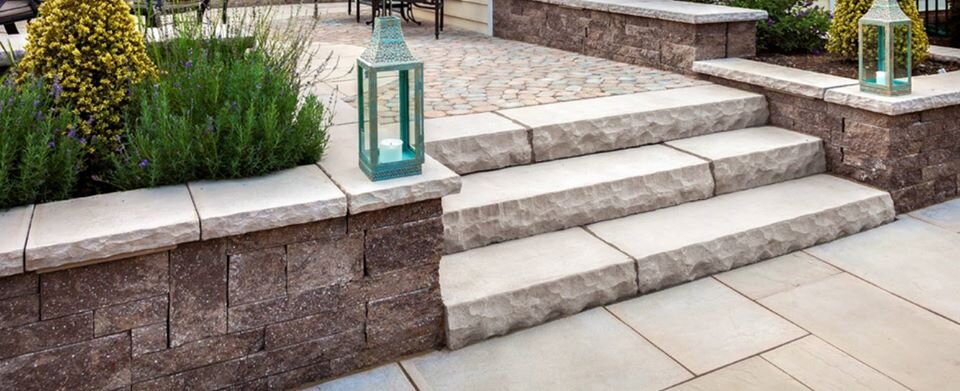Preserve the significance of your historical home with complementary outdoor landscaping. Patio pavers allow you to stay true to your home’s character, while at the same time giving you some flexibility with style and color choice. Here’s how we are picking patio pavers to suit historical homes in Bergen County and Sussex County, NJ areas.
Related: 5 TOP PICKS FROM OUR GARDEN CENTER FOR SUMMER IN HUDSON VALLEY, NY
What is Historical Landscaping?
When designing a hardscape that acknowledges the historic significance of your home, it’s important to use materials that have been used historically. Using traditional materials is the best way to complement the design of the home while you create a beautiful outdoor living space that you will use and enjoy. Fortunately, there are a variety of materials that fit this description and will allow you to be creative with your design, all while adding to the historical beauty of your home.
Many landscapes that are designed with a historic influence have some common threads among them, such as the use of bricks and stones, or certain color combinations. However, even with these common threads, each design remains unique. Historically influenced designs can come from many different locations, time periods, and building styles. If you know the history of your home, you can research different landscaping techniques from the time and place where your home was built, to stay true to its roots.
Brick Pavers
From traditional red, to natural hues, to dark and weathered, bricks are a go-to material for historically inspired hardscapes. They have been around for millenia, and the beauty of true brick comes from the unique color variations in each one. Bricks that are made in the traditional way by shaping and firing clay always have an element of color variation, as the clay from the ground is never just one solid hue. Bricks around the world can be found in many different hues depending on the color of the natural clay found in the earth. To stay true to the historical character of your house, work with brick colors that are native to your geographical area.
Bricks are one of the most versatile materials to use for your historical hardscaping, as they can be arranged together in many different patterns. Especially when designing a patio with ample space to be creative, experiment in your plans with how different brick-laying patterns will look next to your house.
Bluestone Pavers
Natural bluestone, or pavers made to look and feel like bluestone, are a gorgeous addition to any historical home. Natural bluestone is a type of flagstone that, similar to true brick, contains a variation of color in each stone that makes it truly unique. This material is an elegant addition to a sophisticated historical estate. With these variations in hue, bluestone is the perfect choice to complement any home in the form of a walkway or patio.
Granite Pavers
Granite, or granite-like pavers, are another beautiful addition to a stately historical home. Large rectangular pavers that are slightly varied in length and width can be installed as a patio where there is ample space to keep the feeling of a wide-open atmosphere. Smaller pavers can be used as a winding walkway across your yard, or leading up to your front door. Grey granite is a common choice that matches the historical aesthetic of many homes, with its natural dark and light speckles that combine to form soft shades of grey. If you are looking to make more of a statement with your granite hardscape, look for pavers that come in neutral colors or darker hues.
Tumbled Pavers
Tumbled pavers are the best choice to give your landscape a timeless appearance with its historically weathered charm. It is a great complement to brick homes, as these types of pavers can be more solid in color and come in many different sizes of rectangles. Their varied shapes give them the ability to be used in many types of hardscaping projects.
Related: ADD COLOR TO YOUR LANDSCAPE WITH THESE PICKS FROM OUR PLANT NURSERY IN THE ULSTER COUNTY, NY, AREA


